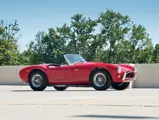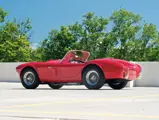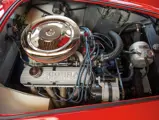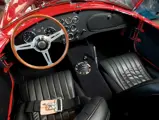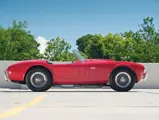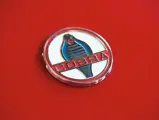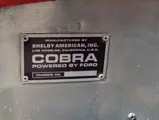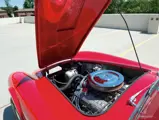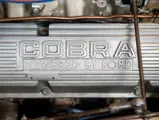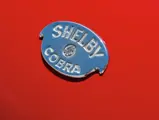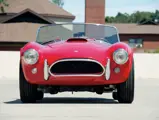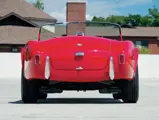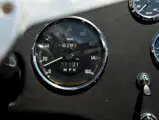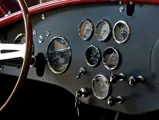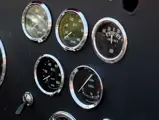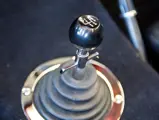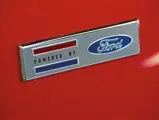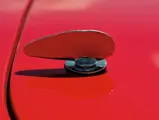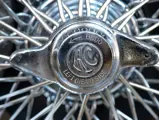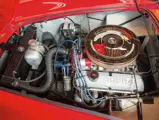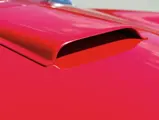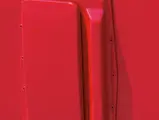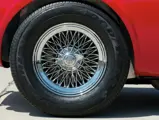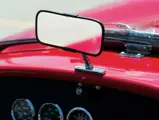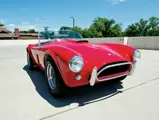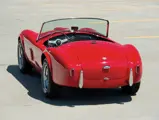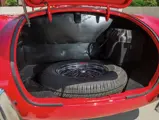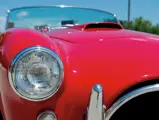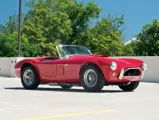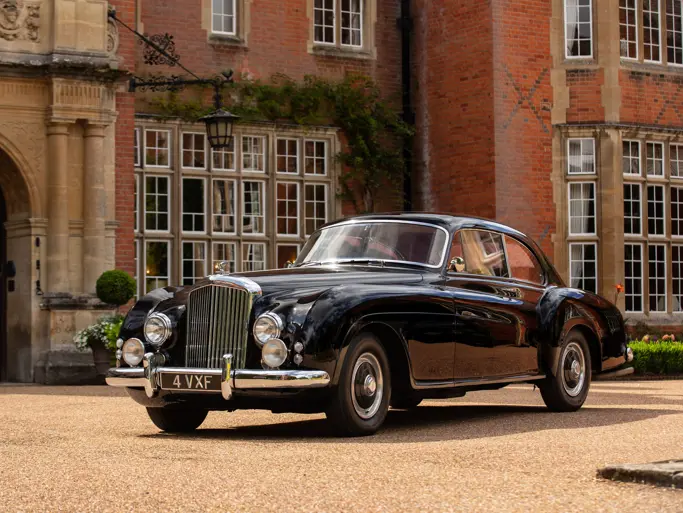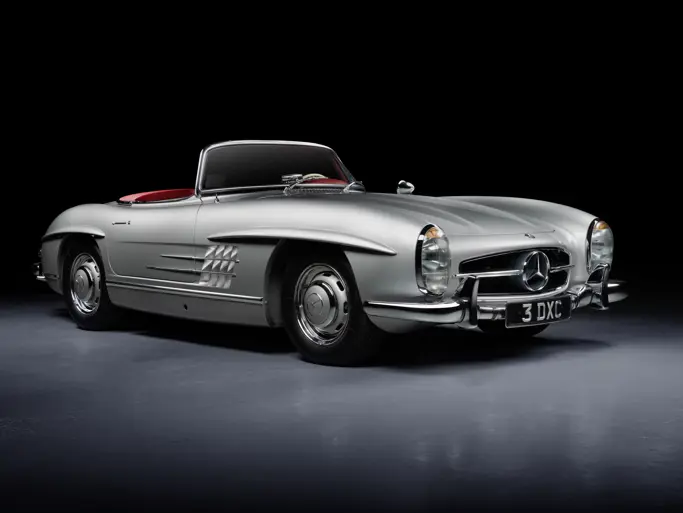Monterey 2012
1963 Shelby 289 Cobra
{{lr.item.text}}
$522,500 USD | Sold
 | Monterey, California
| Monterey, California
{{internetCurrentBid}}
{{internetTimeLeft}}

271 bhp, 289 cu in Ford OHV V-8 engine, Holley four-barrel carburetor, four-speed manual transmission, ladder-type steel tubing chassis with independent front and rear suspension via A-arms, transverse leaf springs and tubular shock absorbers, and four-wheel hydraulic disc brakes. Wheelbase: 90"
• Early “Ford Custom Caravan” history; owners include Ford’s Jacques Passino
• Documented in the Shelby American World Registry; single ownership from 1971 – 2011
• Freshly and correctly restored by Cobra expert Geoff Howard, of Accurate Restorations
• Highly desirable early-production Cobra
The notion of producing a hybrid sports car in the 1960s was, at its core, quite simple. While British manufacturers retained the edge in styling, road holding, and superb braking, American firms held a distinct horsepower advantage. This “best of both worlds” concept was, of course, nothing new. Postwar Allards, Cunninghams, and Nash-Healeys used the same basic premise. Carroll Shelby, however, considered chassis from Austin-Healey, Jensen, and Bristol before settling on AC after hearing that the builders of the stylish and sturdy Ace had lost their engine supplier when Bristol ceased production.
Attractive, lightweight, and proven, the AC Ace could, by Shelby’s thinking, be turned into a successful production racer by replacing its aging six-cylinder engine with a powerful, deep-breathing V-8. In September 1961, Shelby wrote Charles Hurlock, of AC Cars, to propose a hybrid car using the AC sports car body and chassis. “I’m interested,” wrote Hurlock, “if a suitable V-8 could be found.” Shelby moved quickly when editor Ray Brock, of Hot Rod magazine, told him of Ford’s new lightweight “small-block” V-8. Soon after, Shelby had an early 221-cubic inch example installed in a stock AC Ace. In fact, the V-8 weighed just slightly more than the six-cylinder Bristol.
Ford engineer Dave Evans then offered Shelby an even better solution. A high-performance 260-cubic inch “small-block” V-8 was already in production for Ford’s Falcon, and two engines would be on the way to him soon. They were immediately sent by airfreight overseas, and on February 1, 1962, Carroll Shelby flew to England to test drive the new Shelby “Cobra.” The rest, as they say, is history.
CSX2048
Freshly, completely, and expertly restored to factory-correct condition by Cobra restoration specialist Geoff Howard, of Accurate Restorations, this early small-block Cobra, numbered CSX2048, has particularly fascinating history, and it is well documented in the Shelby American World Registry. Factory-finished in red and black, the same colors as today, CSX2048 was invoiced to Shelby American on November 13, 1962 and shipped to Los Angeles. According to the Cobra’s entry in the Shelby American Registry, factory documents recorded that it was refinished in a custom pearlescent paint finish and used briefly as a show car, followed by storage at the Shelby American warehouse prior to joining the famous “Ford Custom Caravan” travelling display.
Next, CSX2048 was acquired by none other than Jacques Passino, the head of Ford Motor Company’s racing operations during the storied “Total Performance” era under Henry Ford II. Invoiced to Passino for $5,889.30, after a $300 Ford Motor Company discount, the Cobra was equipped with the Class “A” accessory package, the aforementioned pearlescent paint finish, chrome wheels, and Goodyear racing tires. As related by the Shelby American World Registry for CSX2048, the invoice to Mr. Passino lacks the standard cancelling credit memo usually dated one month later, and it was similar in its date and essence to the invoices for Cobra 2042 and 2046, indicating that all three cars were used by Ford Motor Company as either demonstrators or for PR purposes. While it is known that the sister cars were returned to Shelby American after a few weeks and then sold to dealers at reduced prices, the subsequent history of CSX2048 resumes in late-1970, when it was advertised for sale by a Massachusetts-based dealer.
In May 1971, CSX2048 was purchased by Mark Panageotes, of New Hampshire, who ultimately retained the car until the late-2000s. As later related by Mr. Panageotes when he acquired the Cobra, it read 33,273 miles with an early 289 V-8 engine and other equipment intended for drag racing.
Over the next thirty-plus years, Mr. Panageotes maintained CSX2048 much as he purchased it, with the exception of a repaint in red completed in 1973. He drove the Cobra frequently and regularly during his tenure, and following a move to Kansas, Mr. Panageotes extensively campaigned the Cobra in Kansas State Sports Car Club auctocross events. In all, he and the Cobra visited 21 U.S. states and four Canadian provinces, covering a conservatively-estimated 5,000 miles per year, on average, over the years. In 2003 alone, the Cobra was driven from New Hampshire to Nova Scotia, Canada, driven around the perimeter of the province, and then driven back home to New Hampshire. In 2005, the Cobra was driven approximately 2,500 miles over nine days, from New Hampshire to Florida and back, during which time it performed faultlessly and created a stir wherever it went. Remarkably, CSX2048 was shown at a Shelby event for the first time in its existence at the Lime Rock Park Labor Day Sunday Show of Shelbys in 2004. A complete restoration of CSX2048 was undertaken during the late-2000s, and then in late-2011, after 40 years of ownership, Mr. Panageotes sold his beloved Cobra to another enthusiast, under whom the restoration was recently completed.
As offered now, CSX2048 is freshly restored to its factory-original condition, with a red finish and black upholstery. The restoration project was headed up by acknowledged Cobra marque specialist Geoff Howard, of Accurate Restorations, with the engine and mechanical work completed by Toby Knapp Auto Repair, of Danbury, Connecticut, and the paintwork and finally assembly handled by Carland Auto Repairs, also of Danbury. Truly a complete restoration, the work addressed the body, cosmetics, chassis, and all of the car’s mechanical systems. Two photo books, with one documenting the bodywork and the other covering all of the other restorative work, accompany the sale of the Cobra at auction. Currently powered by a 289 V-8, the sale of CSX2048 includes a period-correct 260 engine block, in addition to top bows and top, which have never been used, a tonneau cover, tools, and other items. An expertly-restored early example of the legendary Shelby Cobra, CSX2048 epitomizes one of the most capable and downright thrilling sports car marques in history.

